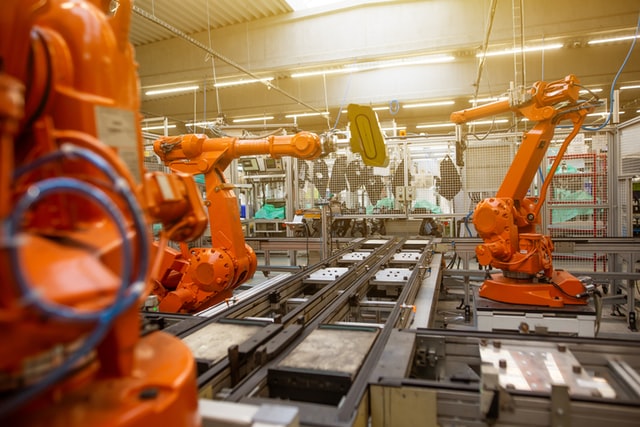The best way for a business to grow is to minimize its expenses. As a result, businesses are trying to see how they can reduce operational costs to save even more money when manufacturing materials and products. In this article, we will talk about the 5 best ways to improve the efficiency of conveyor systems. So, letís get started.
1) Use a Premium Efficiency Motor
Reducing energy consumption and plant operating costs is a huge step up to maximizing the efficiency that a conveyor system can have. It isnít a business secret that every manufacturer claims that they have the best and most efficient conveyor motor. The real efficiency, however, is found when you switch over to a premium efficiency motor. This is because this type of motor will reduce the systemís energy consumption levels by a significant margin. The trick is that they are made from higher-quality construction materials, utilize windings, and have much better tolerance. This allows them to create the same amount of power while requiring less energy, resulting in much smaller energy costs.
2) Start Conducting Preventive Maintenance
The type of conveyor system that is used will result in different functional problems. For example, the problems that occur with a roller conveyor belt that is used to move parcels will be vastly different from an overhead chain conveyor that transports car chassis, not to mention that the previous one also requires less overall maintenance to function well. Depending on the temperature, you might even need to change the maintenance method. In harsher temperatures, the conveyor will be working less optimally.
Generally, in the workplace, you should always strive for preventive maintenance over reactive maintenance. This will always put you at an advantage and minimize the damage that can possibly come. Both the motor and the conveyor will be much better off by applying this method. The process should include inspecting all of the conveyor parts to check whether something needs replacing or not. This can easily be figured out by gouging whether they have any wear and tear noticeable. If you do spot such elements, update the parts in question so that the conveyor can resume working at maximum efficiency. This approach will result in a much longer life span of the conveyor system while also saving you money in the long run. If you keep accurate records of all of the changes that you apply to the conveyor, you can make sure that you constantly know when and for what part preventative measures need to be applied.
3)Be More Insightful About the Pre-Production Belt Selection
A lot of factors can influence the efficiency of a conveyor belt before it even starts working. So, take into consideration the following elements:
ē What is the Flow Rate Like?
Depending on the industry and the purpose of the conveyor belt, you will need different flow rates to maintain an optimal workflow. Some industries will require a faster-moving conveyor belt to keep up with the fast pace of the business. The clearest example of this is the airplane industry. However, for faster-moving conveyor belts, you will require endless splicing tools, fasteners, maintenance tools, and segmented transfer plates
ē What Will the Belt be Used For?
Depending on the workload that will be getting moved around, you will require different types of conveyor belts. A business in the food industry will not be (hopefully) using the same conveyor belt as a business in the pharmaceutical industry.
ē Always Set the Conveyor to Pull, Not Push
Pulling makes the conveyor work a lot more efficiently than it would if it were set to push. This is because the belt can lose anywhere from 50% - 70% of its load capacity when it is pushing
ē What is the Load Size the Conveyor Will be Carrying
The size, dimensions, and weight among other elements all determine how well the conveyor will be working. Depending on what are the primary specifications of the loads it will be carrying, the optimal belt can change. It can influence what the best hardware, the material of the belt, and the motor will be for the conveyor to do its job in the most efficient way possible
4) Implement a Variable Frequency Drive (VFD)
Regulating the working time of a motor can save a huge amount of energy depending on the real-time needs of the production. Most conveyor systems have only two modes: on and off. When the system is running, it doesnít take into account whether something is being processed or not Ė it always runs at maximum speed.
This is where the VFD comes into play. It can change the speed of the conveyor to match the production demands in real-time. After some time you can really start seeing the effects of the VFD. When it slows down the speed when it isnít processing anything, it can save around 85% of energy consumption. This does not only reduce electricity costs but also extends the lifetime of the conveyor system. Overall, there is a nice and efficient collection of conveyor products and solutions.
5) Always Keep the Conveyor Clean
It should come as no surprise that even the most efficient and state-of-the-art machine wonít do its job properly if it isnít cleaned regularly and properly. Regular cleaning reduces friction and energy consumption which leads to a lengthier life of the conveyor system and all of its parts.
All of these factors can contribute to how much money you will pay for energy consumption and how much efficiency you will see from your conveyor system. If you stick to these tips, you are sure to achieve maximum efficiency. Good luck!





